Propagation Path of Handicraft of Maritime Silk Road from the Perspective of Canal Transportation
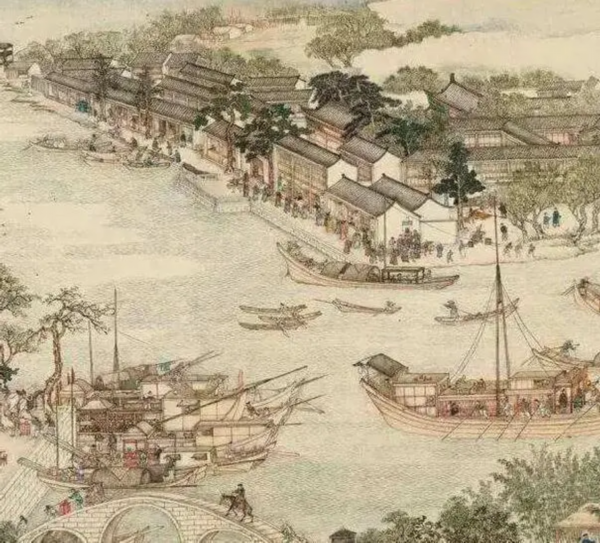
In the traditional society, the propagation path of Chinese and foreign handicraft products on the Maritime Silk Road started inland, and with the help of inland transportation, especially the canal transportation function (especially after the Tang Dynasty), the inland handicraft products were transported to coastal ports, and then transported to all parts of the world by sea routes; Similarly, foreign handmade products are transported to inland areas through sea routes and canals. It is the opening of the canal that is conducive to transmission. At the same time, the area through which the canal is transported is also the most important area for the production of silk, porcelain and other handicrafts exported from China. Therefore, as the "Maritime Silk Road" and the transportation channel connecting maritime and inland handicraft products — — The products, materials, technology, development process and external transportation path in the canal, especially the internal relationship between them, should be paid special attention to.
"Silk Road" is a broad concept, including land and sea passages. Handicraft spread in the "Maritime Silk Road", especially in the maritime route connected with the Beijing-Hangzhou Canal, the input and output of materials, products and techniques include silk, porcelain and other craft products, materials and manufacturing techniques. It is no exaggeration to say that silk and porcelain in the Maritime Silk Road have become two business cards of Chinese handmade civilization, and its influence scope and time span are rare in other handmade products in the world. The reason is that it benefits from the continuous external transportation and trade of handmade products on the Silk Road.
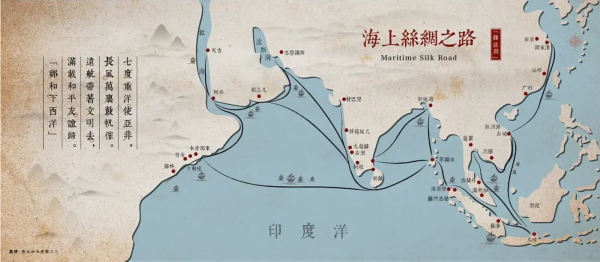
First, the prelude of marine craft transportation "flow" of craft in Beijing-Hangzhou Canal transportation
As a commodity, the development and prosperity of handicraft products can not be separated from three elements: material, technology and product delivery, especially the product delivery determines the rise and fall of a certain craft.In traditional society, the materials of handmade products are mostly selected from local materials and tailored to local conditions. Therefore, most handmade products have primary characteristics, and the manufacturing process is confidential, so it is difficult to communicate and spread the process. At the same time, due to the limitation of transportation conditions, the circulation and sales of products are also subject to many limitations. The above conditions further hindered the spread of crafts, and many handicraft skills gradually disappeared or lost because of these conditions. The famous pen-making technology of Zhuge family in Xuanzhou in history continued from the Tang Dynasty to the Five Dynasties to the Song Dynasty and flourished for more than 700 years. Ouyang Xiu, a litterateur in the Northern Song Dynasty, once wrote a poem praising Zhuge Bi, which was written by Sheng Yuhui Xuanzhou:"The more holy Xuancheng people, can make the purple brush. Declare that people are wise, and keep their careers. Tight heart and long hair, the third mate is quite precise. Hard and soft are suitable for people, and one hundred tubes are not bad. "Regrettably, after the Song Dynasty and the years, Zhuge Pen gradually disappeared. According to "Tiewei Mountain Congtan":"Xuanzhou ZhuGeShi, a worker in charge of the city, has been doing his job since he was a child, … … After Zheng He, the name of Zhuge died. "There are many reasons for the demise of Zhuge Pen in Xuanzhou. Apart from inheritance, materials, manufacturing technology, writing methods and other factors, Zhuge Pen, as a famous craft brand at that time, was difficult to form rapid circulation and large-scale market demand due to transportation conditions, which limited its further development. There are countless examples like this. Xuanzhou brush is a famous craft brand that has flourished for hundreds of years in history, especially for many small handmade varieties that have disappeared in the long river of history. Therefore, product transportation plays an important role in traditional craft communication. Without smooth transportation channels, there will be no market, communication and development of handicraft products, which will eventually die out.
Canal commercial transportation not only brings the flow of handmade products and commercial goods, but also greatly promotes the spread and development of handmade materials and processes. It started from domestic trade, and then expanded to overseas trade, gradually pushing handmade products to the world. On the one hand, the smooth flow of the canal promoted the development of the canal city, which not only led to the emergence of famous canal handicraft cities such as Yangzhou, Changzhou, Huai ‘an, Suzhou and Hangzhou, but also made some unknown areas (canal city Linqing) rapidly develop into prosperous handicraft cities. On the other hand, the smooth flow of the canal promotes the exchange and spread of handicraft products, materials and crafts along the canal area, which runs through the historical development of the whole canal. The Sui and Tang Canal not only undertakes the function of water transportation, but also transports handmade products from all over the country to Chang ‘an. After Wei Jian opened the Cao Canal from Luoyang to Chang ‘an, the handmade products in the south of the Yangtze River continuously arrived in Luoyang through the canal, and then were transported to Chang ‘an through the Cao Canal. Handmade products and raw materials from Yangzhou, Changzhou, Guilin, Nanchang, Shaoxing, Xuancheng and Guangdong were continuously transported to Chang ‘an through the canal. Porcelain was also an important handmade product transported by the canal during this period. A large number of porcelain were unearthed at the site of the Liuzi Sui and Tang Dynasties Canal in Huaibei, including:"Xing Kiln, Shouzhou Kiln, Xiao Kiln, Dongmendu Kiln, Cizao Kiln, Gongxian Kiln, Changsha Kiln, Hebi Kiln, Lieshan Kiln, Jingdezhen Kiln, Jizhou Kiln, Ding Kiln, Cizhou Kiln, Linru Kiln, Yaozhou Kiln, Jianyao Kiln, Longquan Kiln, Yue Kiln, etc.". During the Ming and Qing dynasties, the delivery of handmade products, materials and techniques through canals was more abundant. In addition to porcelain, silk products and materials are another important handmade product transported by the canal. Suzhou, the weaving center of silk products in Ming and Qing Dynasties, produced silk raw materials far from meeting the needs of silk products production at that time, so a large number of silk raw materials were transported to Suzhou from other regions through the Beijing-Hangzhou Canal. Silk raw materials in the north are sold to Suzhou in large quantities, and there is a cocoon and silk shop in Shandong and a cocoon and silk shop in Linyi in the "Prosperous Times Breeding Map". Cocoon silk is a specialty of Shandong province, which is woven from the cocoon silk of the wild silkworm (the silkworm that eats oak leaves), so it is called cocoon silk or mountain cocoon silk, which is thick and hard, strong and durable. At that time, cocoon silk was produced in Shandong province, but it was not well-known in Yishui county or Yishui area, Yizhou prefecture. All kinds of silk produced in various places, whether bulk products or rare products, were sold in Suzhou, indicating that Suzhou transported and collected silk materials from various places through canals at that time. After the Ming Dynasty, the origin of raw materials was separated from handicraft production day by day, and the cotton textile industry in the south was developed. At that time, most of the raw materials were taken from the north, and the Jiangnan area with developed textiles used the canal to facilitate transportation, imported cotton from the north, and then spun it into cloth. For example, Songjiang’s textile raw materials are mostly taken from the north and Zhejiang. Songjiang cloth, which is famous at home and abroad, needs a lot of cotton, some of which is imported from the north. Huzhou is adjacent to the Canal, and it has the conditions for canal transportation. Therefore, it is very likely that cotton sold from the neighboring counties will be purchased from the north along the Canal and then transported back to Huzhou. In the exchange of cotton, cloth and yarn, businessmen can not only control production, but also grab greater commercial profits.Easy to get rich. The production situation of cotton cloth in Changshu in Ming dynasty can better explain that the canal opened a channel for the diversification of manual materials selection in coastal areas. Six tenths of cotton materials in Changshu in Ming Dynasty were transported from Shandong by canal. Therefore, when people Wang Xiangjin in "Er Ru Pavilion Qunfangpu" commented like this:"The northern soil is broad in tree art but not in weaving, and the southern soil is fine in weaving but not in art, so cotton is in the ark and in the south, while cloth is in the ark and in the north."All these indicate that the canal transportation has realized the transfer of handicraft production materials, which is an important guarantee for Suzhou to become a famous silk and cotton production center in Ming and Qing Dynasties.
The transportation of materials, products and techniques in the Beijing-Hangzhou Canal not only plays an important role in the spread and development of inland handicrafts, but also plays a vital role in the prosperity of marine trade connected by it. Yangzhou, Huai ‘an, Ningbo, Hangzhou, Suzhou, Zhapu and Jiangnan during the prosperous period of the Canal were not only famous foreign handicraft products trading ports, but also handicraft products production distribution centers. A large number of handmade products, materials and skills spread to Japan, West Asia, South Asia, Southeast Asia, East Africa, North Africa and other regions through the maritime ports connected by canals. Many tri-colored wares, twisted fetal pillows, grape glasses of hippocampus in Tang Dynasty, moon rabbit’s double-finch octagonal glasses and imitations found in Hakata, Fukuoka, Japan are similar to those unearthed in Yangzhou. In Japan, South Korea, Southeast Asian countries, Egypt and other countries’ cultural sites, as well as the Xin ‘an and Blackstone shipwreck sites, a large number of celadon, white porcelain, tricolor and so on have been found along the canal or transported to all parts of the world through the canal. In addition, the materials used to make all kinds of handmade products are also bulk commodities transported overseas through the canal. The handmade raw materials sold abroad are mainly all kinds of raw silk and cotton. Silk is as popular as silk in all countries because of its high quality, and white silk and yellow silk are all best sellers for export. Merchants in Southeast Asian countries believe that "Husi" is of excellent quality, and the silks and satins woven are gorgeous and exquisite, and the price can be doubled after being trafficked back to China, which is very popular. Imported raw materials are mainly precious wood, such as ebony, chicken wing wood, rosewood, nanmu and metal materials. It has been mentioned many times in Ming History that officials went to Southeast Asia to purchase raw materials such as rosewood, rosewood and ebony.The richness and high quality of handicraft exchange are not only reflected in the variety and high quality of handicrafts, covering ceramics, silk weaving, bronzes, lacquerware and other types, but also reflected in the orderly management of input and output of handmade products. During the Song and Yuan Dynasties, the import and export handicraft products were divided into "fine color" and "coarse color". Fine classification self-management has been implemented in import and export trade, which is conducive to the sustainable development of handicraft products export.
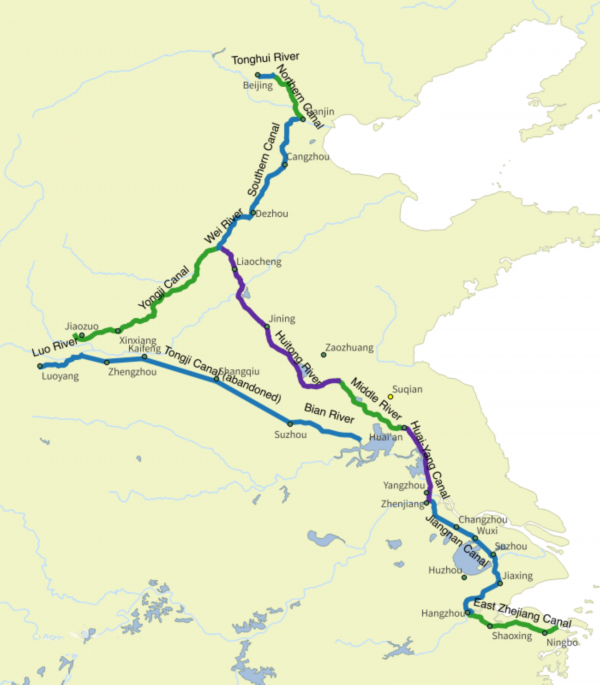
Two, the Beijing-Hangzhou Canal as the connection of the external process transport path.
The transportation of handicraft products in the Beijing-Hangzhou Canal is divided into two systems: one is the exchange of handicraft products in inland areas caused by the transportation of the canal, which actually runs through the internal exchange of handicraft products with the "water transport" after the canal runs through the north and south. This kind of technological exchange originated from some handicraft products carried privately by "grain transportation", and then developed into large-scale specialized manual materials, products and technology transportation. Handicraft products carried by water tankers are very common in the whole history of water transport in the canal. For example, in the Chongzhen period of the Ming Dynasty, Bi Ziyan, a senior minister of the Ministry of Housing, mentioned the serious situation of carrying smuggled goods by Cao ships in his "Meeting the Demands":"The soil of the husband’s army is suitable, and the single case must bring sixty stones. This court is also full of grace. Today, it is illegal to bring more, cedar boards, full of dripping wet, porcelain paper, attached to Bibi. "The types of goods privately carried by water tankers are very rich, covering almost all categories of clothing, food, housing and transportation, and at the same time, communicating the exchange of handicraft products between North and South. For example, at that time, the native products of Linqing, a famous canal city, were transported along the canal to Jiangsu and Zhejiang provinces"Almonds, Sophora japonica and day lilies are transported to Suzhou and Hangzhou every year. Spiced black dates, sent south along the canal. "Handmade products from the south, such as porcelain, silk, bamboo and wood, kept arriving in the north along the canal. At that time, southern goods were called "southern goods", and southern silks, satins, cloth, tea, sugarcane residue, tobacco, paper, porcelain, inkstone, indigo, and various dried and fresh fruits, as well as local products such as beans, wheat, dates and ironware in Shandong and Liaodong. The other is a foreign trade seaport connected by a canal. From Yangzhou, Ningbo, Taicang and Hangzhou in the Tang Dynasty to Tianjin and Shandong coastal ports, which gradually emerged after the Yuan Dynasty, China’s craft civilization spread all over the world through these ports. The rise of these foreign trade port cities, in addition to their own natural conditions near the sea, their prosperity is closely related to the canal connecting the maritime manual trade. Therefore,The Beijing-Hangzhou Canal not only communicates the technological links between inland regions, but also connects the mainland with the technological civilizations around the world.

From the navigation route, the Beijing-Hangzhou Canal crosses five major water systems: Haihe River, Yellow River, Huaihe River, Yangtze River and Taihu Lake, and crosses the eastern coastal area of China from north to south. This area has also become the most important area for traditional society to export handmade products and technologies. The external port of the Beijing-Hangzhou Canal across the Haihe River system is Tianjin Port, which is the main foreign trade port of the canal flowing through the northern region in Ming and Qing Dynasties. It mainly consists of the North Canal connecting Beijing and Tianjin, that is, the Baihe River and Chaohe River connect Miyun in the north, Tonghui River in the west and Tianjin in the south. The South Canal connecting Tianjin to Hebei and Shandong, that is, from the Zhanghe River and Weihe River at the junction of Hebei and Shandong to the confluence of Tianjin and Baihe River, is an important transportation waterway connecting the north and south and Jiangsu and Zhejiang regions, especially the handicraft products from Shandong, Hebei and other northern regions reach Tianjin Port through the Beijing-Hangzhou Canal. Tianjin shipping terminals are mainly divided into mixed ports of internal transportation and external transportation, and the internal transportation terminals are mainly concentrated on the banks of Haihe River in Tianjin. Sinotrans (marine) terminals mainly include Dagu and Tanggu. During the Ming and Qing Dynasties, especially after Kangxi opened the sea, Tianjin became the main port for foreign handicraft trade in the northern region. On the one hand, Tianjin transports handmade products through the canal, on the other hand, it transports products and materials such as silks and satins, cloth, porcelain, paper, bamboo and wood, inkstone and indigo dye from Jiangsu, Zhejiang, Fujian and Guangdong to Tianjin by sea, and then to Beijing and Zhili counties through the canal. In addition to domestic handmade products and raw materials, there are many "foreign goods" and many imported ones.Foreign goods have also appeared in shops in Tianjin, and even a "foreign goods street" has appeared. At that time, Xu Cui, an official poet, lamented in "Hundred Poems of Jinmen":"The treasures are all from the sea, and the glass mirrors are more than the doors, and the orchids are covered with western brocade (referring to Dutch goods), which is strange and strange."Some of these "foreign goods" were sold by Tianjin merchants from the south, while others were transported by sea and river by southern merchants. Huai River’s passage into the sea, Huai ‘an was an important passage to the sea at that time during the Sui and Tang Dynasties. The canal flowed through Huai ‘an from Huaihe River to the east to the sea, and the sea-going channel entered Huai ‘an and reached the inland (Luoyang) through the canal. Huai ‘an was an important passage to the sea in Tang Dynasty except Yangzhou and Ningbo. Huai ‘an is the gathering place of "Hu Shang Yue Jia". Datang’s commodities are continuously transported overseas from Chuzhou, and overseas handicrafts and treasures are also continuously transferred to Chuzhou and Sizhou. In addition, Huai ‘an is an important port for Korean and Japanese ships to enter the Tang Dynasty. From Korea to the south (Japanese ships directly cross the sea to the west), they go south through the coasts of Shandong and northern Jiangsu, enter the Huaihe River in Lianshui County, Chuzhou, reach Huai ‘an (Chuzhou) along the Huaihe River, and then turn into the canal. Many North Korean ships landed in Chuzhou, and Chuzhou has a "Xinluo Square" specially for North Koreans to live in. In addition, the Japanese envoy to Tang Dynasty also landed in Chuzhou many times. In 702 AD, the Japanese envoy to Tang Dynasty landed in Chuzhou and went to Chang ‘an after going through the formalities. Long-term contacts have led the Japanese to be infatuated with the rare and precious handmade products in the Tang Dynasty, that is, the so-called complex of "the number of things in the Tang Dynasty is strange".

Yangzhou, Zhenjiang, Jiangyin and so on are the important foreign handicraft channels for the canal to cross the Yangtze River system and enter the East China Sea. Especially in the Sui and Tang Dynasties, Yangzhou became a maritime foreign trade hub. At that time, Yangzhou was not as far away from the mouth of the Yangtze River as it is now. At that time, the tide could go directly to Yangzhou against the river, causing serious natural disasters such as ship damage. Yangzhou’s economic status even surpasses Chang ‘an. Yangzhou is connected to the Canal in the north, the Yangtze River in the south and the East China Sea in the east. It has become a relay port for the gathering and exchange of materials between the north and the south and the Chinese and foreign navigation routes. Among many Tang Dynasty cultural sites found in Yangzhou, there are many porcelains from Changsha Kiln, Criminal Kiln, Yue Kiln, Gongxian Kiln and other places all over the country, and these porcelains are finally exported to all parts of the world through Yangzhou. In particular, Yangzhou found that the Tang blue and white flowers were intrinsically related to the three blue and white flowers on the Blackstone and the Tang blue and white flowers fired in Gongxian kiln. The destinations of Yangzhou’s foreign handicraft trade were mainly in two directions: First, East Asia, Japan and North Korea. At that time, Japan "sent Tang envoys" across the East China Sea, arrived in Yangzhou via the Yangtze River, and went north along the canal to Chang ‘an. Among them, "Tang envoys" not only carried a large number of Japanese handmade products, but also made jade, metal processing and other fine handicrafts and artists. At that time, Tang Jin, who was in contact with Yangzhou, Japan, found a large number of porcelains in the Tang Dynasty, such as celadon, tricolor and twisted tire pillows. In addition, a large number of merchant ships from Xin ‘an, North Korea also traveled between Yangzhou, North Korea. The other is Southeast Asia, South Asia and West Asia. This route first landed in Guangzhou or Fujian by sea route, and then reached Nanchang (Hongzhou) and Jiujiang (Jiangzhou) by Meiling.Go down to Yangzhou along the Yangtze River. At that time, Guangling County, which Yangzhou belonged to, was not only a metropolis where merchants from all directions gathered, but also a famous handicraft production base, famous for its bronze mirrors, brocade, lacquerware and hat-making. At the same time, it was an international metropolis for the exchange of handmade products, and merchants and tourists from Southeast Asia and West Asia could be seen everywhere. At that time, Yangzhou’s handicraft shop opened by Persians was called Persian Mansion, and there was also a special reception.
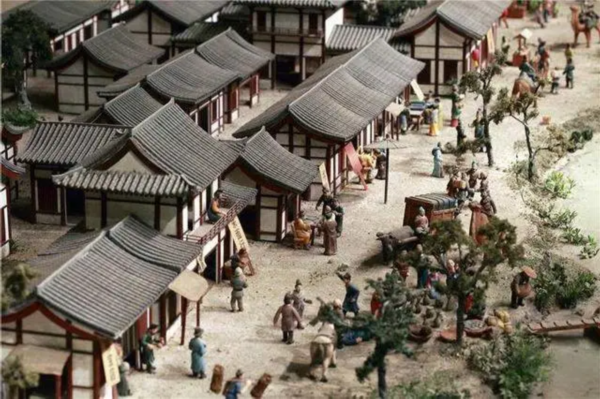
The passage of the canal through Taihu Lake system (Jiangnan sea passage) is the most important and complicated in connecting foreign ports, which mainly includes three sea passages: first, it goes to sea through Wusong River via Shanghai, enters Wusong River from Suzhou to the east, and goes to sea via water transport hubs Qinglong and Fushan via Shanghai. Due to the limitation of natural conditions, the scale of Shanghai Port was very small before the Yuan Dynasty. Therefore, compared with Yangzhou and Ningbo, the development of foreign handicraft exchange was relatively late. In the Yuan Dynasty, a trade company was set up in Shanghai, and the main foreign direction was East Asia and Southeast Asia. The handmade products exported through this channel were mainly five-color satin, silk, printed cloth, blue cloth and other silk fabrics. The input is mainly handmade materials such as ivory, rhinoceros horn and jewelry. Second, through the Loujiang River and Suzhou, it arrived at Liujia Port in Taicang and went to sea. Therefore, Liujia Port flourished and became famous."It is connected to Ryukyu, Japan and other six countries, so Taicang Nanguan is called the Six-Country Wharf."And it’s quite prosperous here."Datong sails, and ships from Ryukyu, Japan and Korea gather in Taicang, becoming the first city in the world."It is an important international port leading to the sea by the Jiangnan Canal. Third, the Huangpu River is connected with the canal waterway crossing Taihu Lake through Suzhou River. In addition, Hangzhou is directly connected with the ocean by means of Taihu Lake water system. Since ancient times, Sujiahang area is closely connected with Taihu Lake, and the canal leaves Qiantang River in Hangzhou, which is the East China Sea, with developed transportation and developed manual commerce.
Ningbo Passage (East Zhejiang Canal): The Grand Canal crosses Qiantang River and connects to Zhejiang Canal in the south, and joins Yaojiang River and Yongjiang River in Shangyu, leading to the East China Sea. With the smooth flow of the canal and the economic development in eastern Zhejiang, the canal in eastern Zhejiang is increasingly busy. After the Tang Dynasty, the status of Ningbo Port became increasingly prominent. The East Zhejiang Canal has become an important channel for overseas traffic, the most important sea passage for handmade products to North Korea, Japan and Southeast Asia, and even the originating port for celadon from Yueyao. In 2003, more than 100,000 pieces of high-quality Yueyao celadon from the late Tang Dynasty to the Five Dynasties were found on the sunken ship in Jingliwen, Java, Indonesia. This ship undoubtedly sailed to West Asia through the East Zhejiang Canal and Ningbo Port. In addition, after the late Tang Dynasty, Mingzhou became the main port for exporting handmade products to Japan.
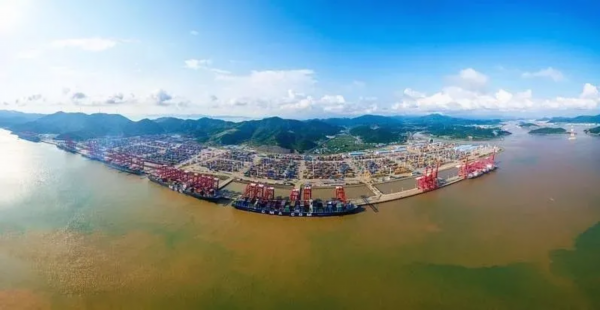
From the perspective of utilization efficiency and influence, the Yangtze River Passage, Taihu Lake Passage and Ningbo Passage are the main channels for the canal to export handmade products. Especially after the Tang Dynasty, with the economic development in the south of the Yangtze River, a large number of fine handicrafts, such as bamboo, porcelain, silk, lacquerware, bronze and daily utensils, have emerged, which has become the standard pursued by people all over the world. Yangtze River Passage, Taihu Lake Passage and Ningbo Passage are increasingly becoming the most important transport channels for canal communication between China and overseas handicrafts.
From the perspective of time, the emphasis on the canal passage to the sea is different in different historical periods.The sea passages in Tang Dynasty were mainly concentrated in Huai ‘an, Ningbo and Yangzhou.Yue kiln celadon was transported from the canal through Mingzhou and Yangzhou to Korea, Japan, Southeast Asia and West Asia, especially in the late Tang Dynasty to the Five Dynasties. At this time, the channel for manual export to Japan is becoming more and more mature."Japan directly crossed the East China Sea from Chika Island (now Hirado Island and Wudao Islands) in Matsuura Prefecture, Feiqian, to Mingzhou, and then entered Hangzhou at the mouth of Qiantang River through inland navigation. The Beijing-Hangzhou Grand Canal, which was opened in the Sui Dynasty, went directly to Yangzhou, the trade center at that time, and even to Chang ‘an, the capital, the famous southern route. "In addition, during this period, porcelain produced by many kilns in the north passed through the Bianhe River to Yangzhou Port and sold overseas.During the Song Dynasty, especially in the Southern Song Dynasty, Ningbo and Hangzhou became the main channels for overseas export.The destination of transportation is roughly the same as that of the Tang Dynasty, but due to geographical proximity, it focuses more on East Asia, Korea and Japan. In the third year of Yuanfeng in the Northern Song Dynasty, it was stipulated that only Guangzhou, Mingzhou and Hangzhou could release foreign trade merchant ships. If the shipping company of Mingzhou releases ships to Japan and Korea, even if the merchant ships from Fuzhou, Wenzhou and Quanzhou go to Japan and Korea, they must apply for export licenses in Ningbo. In the Yuan Dynasty, the ports transported to the sea through canals were mainly Ningbo Port and Liujia Port, the seaport of Jiangnan Canal. During the Ming and Qing Dynasties, the Jiangnan Passage became the main channel for the canal’s external transportation, and its export destinations included Japan, Korea and European countries.
From the perspective of export scale, the most handmade products directly transported through the canal are silk and porcelain, which cover the whole historical process of transporting handmade products through the canal. In addition, bronzes, lacquerware, prints, fans, paper, ink, pens and inkstones are also products that the canal participates in transportation. From the perspective of transportation countries, the destinations of canal transportation before Yuan Dynasty were diversified, including East Asia, Southeast Asia, South Asia and West Asia. After the Ming Dynasty, the main destination was Japan. For example, it was clearly stipulated in the Ming Dynasty that the main destination of Mingzhou’s foreign trade was Japan. In the third year of Ming Hongwu (1370), three shipping companies were set up in Ningbo, Guangzhou and Quanzhou, and it was clearly stipulated that Ningbo Port was connected to Japan. In addition, Japanese handmade products are also transported to the mainland through the canal.
Third, the composition of Huacai handmade products transported by the maritime Silk Road process
The inland and maritime trade connected by the canal is extremely rich in the exchange and development of Chinese and foreign handmade products, which is not only manifested in the rich variety of products with a long history, but also, more importantly, it brings cross-cultural handicraft exchange. Handicraft products transported through the canal show different characteristics in different historical stages, sea passages, export areas and transportation contents. In Sui and Tang Dynasties, they were mainly concentrated at the mouth of the Yangtze River and the Jiangnan area where the canal flowed, and the main export destinations were Korea, Japan, Southeast Asia, West Asia and North Africa. During the Song Dynasty, the canal passage was mainly concentrated in the Taihu Lake system and the East Zhejiang Canal in the south of the Yangtze River, and the output was mainly handmade products, with the main destinations being East Asia, Japan, Korea, Southeast Asia and West Asia. With the opening of the Beijing-Hangzhou Canal in the Yuan Dynasty, the exchange of handmade products and technologies was mainly concentrated in Jiangnan areas such as Zhejiang and Jiangsu, and most of the export destinations were Japan. During the Ming and Qing Dynasties, due to the geographical relationship, most of the handmade products were exported along the canal in Jiangsu and Zhejiang provinces in the south, while most of them were exported to Japan in the north. Nishikawa Rujian recorded the handmade products of the canal provinces in the Ming and Qing Dynasties in detail in his trade guide catalogue for Japanese businessmen to make a key reference when trading in China.
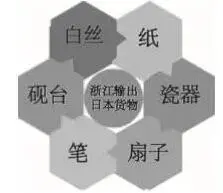
Most of Shandong’s exports to Japan are handmade raw materials, such as yellow silk and silk. , inkstone, silk, five-color stone and a small amount of handmade ceramics from Dongchang. It is not difficult to see that during the Ming and Qing Dynasties, a large number of handmade products were transported to Japan via the canal connecting the Yangtze River waterway and Ningbo. The output of the southern region included all types of products, materials and crafts, while the northern region was relatively single, with the exception of some products, more concentrated on raw materials.
Silk is an important type of trade through canals and seas. It is not only the export of pure products and raw materials, but also the dissemination of technology. From the perspective of silk weaving varieties, the main products traded by canal and sea are satin, silk, velvet, brocade, silk, yarn, twill, silk, silk and silk. Raw materials include all kinds of silk: white silk (Hu silk, Su silk, Hang silk), yellow silk, cocoon silk, worm silk and so on. According to the statistics of Zhufanzhi, the varieties of silk foreign trade in Song Dynasty are: fake brocade, brocade silk, valerian silk, soap silk, colored silk, silk silk, red gibberell and so on. In the Ming Dynasty, Zheng He carried a lot of silk with him, including brocade, silk, yarn, silk, silk and other fabrics. According to "Ying Ya Sheng Lan":"China celadon dishes, bowls and other products, such as silk, silk and burnt beads, are very popular."Use these things to buy rhinoceros horns, spices and other items.
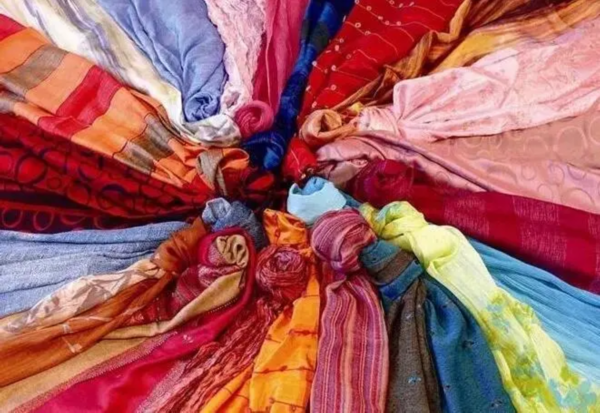
Not only products, but also China’s silk weaving printing and dyeing technology has a profound influence all over the world. As early as the Sui Dynasty, China’s hollow printing plate technology and plant printing and dyeing methods were introduced to Japan. Not only printing and dyeing, but also weaving technology also influenced Japan. The famous Japanese silk weaving technology "Hakata Weaving" was widely absorbed by the silk weaving technology of the Song Dynasty in Kamakura era. In addition, Japan’s "Western Array Weaving" absorbed a lot of silk weaving techniques of the Ming Dynasty. Our country not only exports a large number of raw silk and silk products to Japan, but also has silk workers to Japan to transfer their skills, which has a great influence on the development of silk industry in Hori and Yamaguchi. For example, during the Tianzheng period in Japan (AD 1573-1592), silk weavers of the Ming Dynasty lived in Miyake (the central city of Osaka Prefecture) and taught weaving skills such as "weaving yarn, shrinking Myanmar, Zhu Zi and forging".
Porcelain is another important handicraft that spread overseas through canals. The efficiency and safety of transporting porcelain by water are much higher than that by land. Therefore, after the Sui and Tang Dynasties, it became the first choice to transport porcelain by water, and the porcelain exported to all parts of the world through the canal was rich in variety and excellent in quality. During the Tang and Song Dynasties, porcelain types such as Yue kiln, Longquan kiln celadon, northern white porcelain, Changsha kiln underglaze color and blue and white porcelain flowed into Japan, Korea, Southeast Asian countries, North Africa, West Asia and other regions through the canal through the maritime Silk Road.

Handicrafts involved in maritime trade through the canal include lacquerware, fans, mother-of-pearl, bronzes, paper and pens, New Year pictures (prints) and daily necessities such as iron pots, needles and snack baskets. Lacquer craft has a long history of foreign exchanges. Yangzhou has become the center of lacquer production in the Tang Dynasty. Lacquer in the Tang Dynasty was exported to Japan, and the mother-of-pearl and gold and silver were kept in Zhengcang Hospital. Lacquerware is listed in the list of items imported into Japan in the Ming Dynasty and deeply loved by the Japanese in Volume II of Compilation of Charts. In the sea area of Xin ‘an County, South Korea, besides porcelain, there were many China lacquerware and bronzes on the cargo ship departing from Ningbo Port in the Yuan Dynasty. From the "Zhida Tongbao" unearthed from this shipwreck and the metal weight cast with Qingyuan Road (now Ningbo) in the Yuan Dynasty, it can be inferred that the ship was exported to North Korea and Japan via Ningbo. At the same time, the celadon, lacquerware and bronzes on board include bronze vases (Zun-shaped bottles, Touer-shaped bottles, Yuhu-shaped bottles, Citrus mouth-shaped bottles, clean bottles, three-legged incense burners, Boshan stoves, etc.). It is also recorded in the History of Japanese-Chinese Cultural Exchanges by Takehiko Kimmiya that there are many Zhu Jin lacquer wood carving furniture in Ningbo’s local products, including sedan chairs, beds and couches. Besides lacquerware, bronzes are also handicrafts for foreign trade. Yangzhou is a famous bronze mirror production center in the Tang Dynasty, and many of these bronze mirrors were transported to Japan and North Korea. Many Yangzhou cast seahorse grape mirrors, moon rabbit double magpie eight-flowered mirrors, double Luan Rui eight-flowered mirrors, etc. were unearthed in Okinawa, Japan, and bronze mirrors were found in many ancient cultural sites in Japan and North Korea. In addition, Du Yang’s miscellaneous "Tang Man Cargo Account" was shipped to Nagasaki.Wood painting ",these" wood painting "are the Suzhou New Year pictures of Taohuawu in the Ming and Qing Dynasties. These Suzhou New Year pictures were imported into Japan and absorbed by Ukiyo-e, which enriched the composition processing methods and themes.
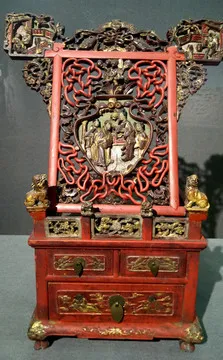
IV. Conclusion
The evolution of handicraft civilization in China should have internal factors besides itself — — Fully developed agricultural civilization, diligence, wisdom and creativity, as well as openness. As far as the scope discussed in this paper is concerned, this open feature is reflected in the continuous spread of silk, ceramics, lacquerware, bronzes and other crafts to all parts of the world through the Maritime Silk Road connected by canals, and at the same time, it absorbs the handcraft civilizations in different parts of the world, forming a mutually promoting and diversified process exchange path, thus promoting the continuous development and self-renewal of Chinese handcraft civilization. In addition, we should pay special attention to the two-way process communication and communication in the transportation line connected with the canal. The Silk Road is not only a point-to-point one-way linear exchange, such as from Ningbo to Southeast Asia, South Asia, West Asia and Europe, but also connects the Silk Road on land and the Silk Road on the sea into a circular process exchange through canals. The international popularity and status of China handicraft products in traditional society are getting higher and higher, and they have the characteristics of internationalization.
(Source: system of canals Editor/Moka Fang)